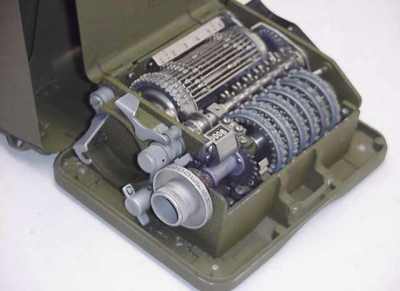|
|
|
|
|
|
|
| M-209A |
|
|
|
M-209 The internet offers numerous articles on the mechanics and the operation of the device. Cypering: The letters to cypher are chosen on a dial and cypered by turning a handcrank. Space is replaced by the letter "Z" The cyphered result is printed out in five- letter groups on a paper tape and may be forwarded by Morse code. Decyphering: After turning a knob from "C" (cypher) to "D" (decypher) the letters received are chosen on the dial, and by turning the hand crank the deciphered text is printed out on the paper tape. M-209 uses just one paper tape for the cypered / decyphered text. The second machine in the collection, the Hagelin C-48A uses two paper tapes, one for the cyphered, and one for the decyphered text. The housing is opened by pushing a pushbutton. The algorithm used is rather simple (it repeats itself after the ca 101 millionth time). Decyphering by the enemy took only a short time, so this machine was used for messages that were no longer important after some hours. In spite of the disadvantages the device was used until the Korean War.
|

